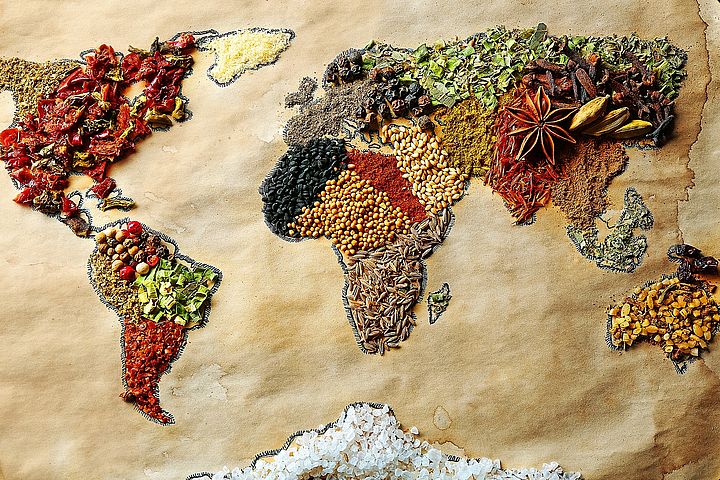Country of Origin – why provenance matters to consumers

As consumers are becoming increasingly choosy about the provenance of various foodstuffs, country of origin labeling can have a considerable influence on their perceptions and purchasing decisions.
For the growing number of shoppers who believe it’s important to know where our food comes from to make an informed choice, where for ethnocentric or ethical reasons, country of origin is among extrinsic “quality cues” they use to evaluate a product.
For consumers who are concerned about the exploitation of people, animals and habitats, their interest in origin might lie in an attempt to reduce food miles from field to fork, or a preference for the higher welfare standards that prevail in certain countries. For others, it may be about supporting local and national economies, or a belief that domestic brands are more trustworthy and better attuned to consumers’ needs or tastes.
Country of origin is also sometimes used as a proxy measure for quality and safety standards, where certain practices, pesticides or fertilizers are used (or not used) in a particular country or region. In 2017 there was backlash in the UK against importing US chicken washed in chlorine as part of a post-Brexit transatlantic trade deal, while chlorination is currently prohibited in the EU.
For epicureans, country of origin has more to do with place-based branding and protected designations of origin providing assurances around distinctive local goods. Certain products have a specific quality or characteristics that are due tot he geographical environment or local tradition in which they’ve produced, such as Champagne, Roquefort, Chianti and Darjeeling.
However, country of origin labeling on food products has become a somewhat controversial topic. Amid a plethora of “fake foods” scandals, in 2015 Italian extra-virgin oil flooding the world’s market shelved was neither Italian nor extra-virgin – or even olive oil in some cases.
While brands promote an image, for example UK grocery retailer Tesco, in 2017 come under fire for using controversial “fake farm” names on its own-brand produce and meat, based on comfortingly British-sounding such as Woodside Farms – in fact, some of these products were not even sourced in the UK but imported from overseas.
It’s not only supermarkets capitalizing on deception. Under an EU labeling loophole, UK retailers – including farm shops and local butchers – are entitled to call a meat product ‘British’, even if the meat itself is sourced from abroad as long as the end product has been processed and packed in the UK. It’s not unusual to see ‘Wiltshire’ cured ham that, on closer scrutiny of the label, is made from EU pork – and it can even bear a union flag on the packaging.
Traceability as a competitive advantage
Country of origin is not a guarantee of food safety: 2013’s “horsegate” scandal illustrated that if you believe you’re buying a beef lasagne, horse meat is horse meat, regardless of where it comes from. Nor does country of origin provide any real certainty about the way livestock has been reared, slaughtered, processed or packaged.
However, country of origin is an important component in food traceability – the ability to track any foodstuff, feed or food-producing animal through all stages of production, processing and distribution. But with increasing globalisation, products often traverse complex global supply chains to reach consumers, making traceability a technical, logistical and financial headache.
Some countries have introduced legal reform, such as the US FDA Country of Origin Labeling (COOL), which mandates specific labeling practices for a number of “covered commodities”. But private sector traceability initiatives and voluntary quality assurance systems are also emerging, often as a result of pressure from downstream food retailers, motivated by a justifiable desire to reduce their own risk exposure.
For both distributors and manufacturers, the ability to reliably select products based on country of origin can be a distinct competitive advantage. For example, a company making authentic passata will specify Italian tomatoes in its recipe, rather than Spanish. Or a Mediterranean supermarket may have a strict requirement for apricots grown in Turkey rather than France or Algeria.
A batch of reasons to capture data
Whether meeting regulations from the likes of BRC, FDA’s Food Safety Modernization Act, NAFTA or customer requirements, an effective traceability system is at the heart of solving the country of origin conundrum.
A modern, fit-for-purpose food traceability system should enable every single pallet, case or item to tell its story wherever it goes, at any point in the supply chain – not just provide the bare minimum of ‘one step back, one step forward’ visibility.
To support these regulatory requirements Produmex Food & Beverage for Distributors and Manufacturers, an industry solution for SAP Business One provides a concept called batch attributes, This easy to use and flexible concept , allows any food business to manage and track any information related to the batch for example country of origin, GMO status and farm, etc which can then be used to provide documented evidence to customers and supply chain partners.
Batch Attribute data is validated and captured using mobile devices during the purchased goods receipt process and recorded against the item batch/lot level. This data is available from the point of purchased receipt, through one or more production activities, packaging, movement through the warehouse and even during sales order entry and the pick list proposal to ensure the correct product is shipped against the customers requirements.
Screenshot: Define the batch attributes valid for this ingredient
In the digital era, traceability of origin is highly feasible using an industry focused solution such as Produmex Food & Beverage for Distributors and Manufacturers, offering an opportunity for progressive food industry enterprises to position their businesses at the forefront of the market, increasing brand recognition and capturing greater market share by addressing the needs of the consumer.
Related articles – How to nip the growing problem of organic food fraud in the bud
